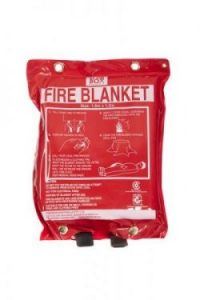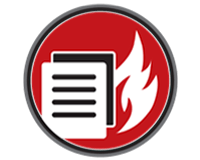
Smoke alarms are easy to spot. Smoke alarms are often a round disc with a red blinking light that’s placed on the ceiling or wall. Some are boxy plastic enclosures that look like digital meters. They easily blend in with the environment. You literally forget about them until the day it starts sounding the alarm.
We can all hope that such an incident doesn’t happen at your workplace, no one wants to live through the experience of a fire emergency. However, if it does happen, you can be thankful that smoke alarms are there ready to warn everyone. The early detection that a smoke alarm provides is hugely vital in saving lives.
But out in the market, there are has two common types of fire alarms, namely: Ionization Smoke Alarms and Photoelectric Fire Detectors. Yes, there are complex commercial fire alarms, but that can be discussed in another article altogether.
For now, we tackle the basics. So let’s learn more about Ionization Smoke Detectors and how they work.

Ionization Smoke Detectors
When air molecules between two metal plates are electrically charged, or ionized, by a small amount of properly insulated radioactive material in these smoke alarms, a little electric current to flow in the air from one plate to another. As particles enter the chamber, they capture and carry away the ions, lowering the current.
When smoke interrupts the ionization process, it sets off the alarm. The device will recognise the particles as smoke and sound an alert when the amount of particles passing through the chamber is sufficient to drop the current below a specific level.
Now if you’re worried about radioactive substances or radiation poisoning – don’t panic! Know that any radiation inside a smoke alarm is significantly low. Far lower than the average radiation present in nature that we come in contact with.
The fact is, ionization-type smoke alarms contain a tiny amount of americium-241 which is considered a radioactive isotope. It needs americium to detect smoke. The tiny amount of radiation it emits is about 1/100 of a millirem per year, a barely-there amount.
According to the Ministry of Health NZ, you would need around 300–400 smoke alarms to get the same radioactivity as the average brick house. These types of fire alarms in that sense do not pose any health risk.

Photoelectric Smoke Alarms
The design of photoelectric smoke alarms is simpler and compact. The light reflected off particles from a light beam inside the sensor chamber is detected by this device. When there are no particles in the sensing chamber, the light from the beam does not hit the light detector, signifying that everything is fine. The alert sounds when particles are present and the amount of light detected by the light detector exceeds a specific threshold level.
Smoke detectors are sensitive devices. Even if you don’t burn anything, smoke alarms inside office pantries or kitchens can recognize smoke particles coming off it as it is heated. They can be set off by something as simple as turning on a toaster.
Ionization vs. Photoelectric: Which is more sensitive?
Ionic alarms are the most sensitive of the two types of fire alarms because they deal with detection at the particle level. An ionic smoke alarm might be triggered by something as simple as vapour from boiling water. Plus ionic smoke detectors are also better at detecting fast-spreading, low-smoke fires. Photoelectric fire alarms, on the other hand, are more responsive to smouldering fires, the long slow-burning type of fire.
Both we can unequivocally say are essential, and the best thing is that you can have both types of fire alarms installed in your NZ home.
The only downside to smoke detectors or fire alarms is that they function exceptionally well as intended. It does however trigger our most human quirk, our hatred for loud noises.
Like many other safety devices, fire alarms can be bothersome and annoying at times since they are designed to detect nearly any kind of smoke- like smoke from cooked food or as well as other elements like dust. The easiest approach is to simply turn off the smoke alarm, but you should never deactivate a smoke alarm entirely and then forget to set it back on. This is putting everyone in the workplace in danger.
Whatever type of fire alarm you choose, know that when a fire starts and the alarm is set off, you have those precious seconds to make your escape to safety.

Need a fire alarm installed in your workplace? Make your property fire safe with Fireco. Get in touch with us for your fire safety needs in Whangarei – call us 0800 101 232 or email us info@fireco.co.nz





















